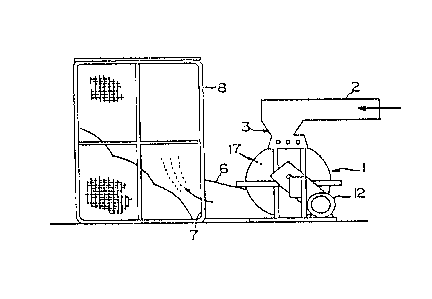Une partie des informations de ce site Web a été fournie par des sources externes. Le gouvernement du Canada n'assume aucune responsabilité concernant la précision, l'actualité ou la fiabilité des informations fournies par les sources externes. Les utilisateurs qui désirent employer cette information devraient consulter directement la source des informations. Le contenu fourni par les sources externes n'est pas assujetti aux exigences sur les langues officielles, la protection des renseignements personnels et l'accessibilité.
L'apparition de différences dans le texte et l'image des Revendications et de l'Abrégé dépend du moment auquel le document est publié. Les textes des Revendications et de l'Abrégé sont affichés :
| (12) Brevet: | (11) CA 1319244 |
|---|---|
| (21) Numéro de la demande: | 1319244 |
| (54) Titre français: | APPAREIL DE FABRICATION DE FIL A BOUTONS ESPACES |
| (54) Titre anglais: | APPARATUS FOR PRODUCING LONG TAILED NEPS |
| Statut: | Périmé et au-delà du délai pour l’annulation |
| (51) Classification internationale des brevets (CIB): |
|
|---|---|
| (72) Inventeurs : |
|
| (73) Titulaires : |
|
| (71) Demandeurs : |
|
| (74) Agent: | SWABEY OGILVY RENAULT |
| (74) Co-agent: | |
| (45) Délivré: | 1993-06-22 |
| (22) Date de dépôt: | 1989-08-11 |
| Licence disponible: | S.O. |
| Cédé au domaine public: | S.O. |
| (25) Langue des documents déposés: | Anglais |
| Traité de coopération en matière de brevets (PCT): | Non |
|---|
| (30) Données de priorité de la demande: | ||||||
|---|---|---|---|---|---|---|
|
Abstract of the Disclosure
The apparatus includes a housing supporting
a main rotor, the periphery of which has a plurality of
teeth and beaters which cooperate with teeth on a set
of feed rollers mounted in the housing alongside the
periphery of the main rotor. The housing has an intake
chute and a closeable discharge door, the arrangement
being such that, in use, a synthetic or
fibrous material fed to the intake chute, while the
discharge door is closed, is fed into the housing by
the feed rollers. The fibrous material is removed by
the beaters and teeth of the rotor from the feed
rollers. The fibrous material is spun in the housing
and the interaction between the teeth and the beaters
of the main rotor and the teeth of the feed rollers
causes the fibrous material to be entangled and felted
to form a plurality of long tailed neps which are
discharged from the housing when the discharge door is
opened.
Note : Les revendications sont présentées dans la langue officielle dans laquelle elles ont été soumises.
Note : Les descriptions sont présentées dans la langue officielle dans laquelle elles ont été soumises.

2024-08-01 : Dans le cadre de la transition vers les Brevets de nouvelle génération (BNG), la base de données sur les brevets canadiens (BDBC) contient désormais un Historique d'événement plus détaillé, qui reproduit le Journal des événements de notre nouvelle solution interne.
Veuillez noter que les événements débutant par « Inactive : » se réfèrent à des événements qui ne sont plus utilisés dans notre nouvelle solution interne.
Pour une meilleure compréhension de l'état de la demande ou brevet qui figure sur cette page, la rubrique Mise en garde , et les descriptions de Brevet , Historique d'événement , Taxes périodiques et Historique des paiements devraient être consultées.
| Description | Date |
|---|---|
| Inactive : CIB de MCD | 2006-03-11 |
| Inactive : CIB de MCD | 2006-03-11 |
| Inactive : Demande ad hoc documentée | 1996-06-22 |
| Le délai pour l'annulation est expiré | 1995-12-24 |
| Lettre envoyée | 1995-06-22 |
| Accordé par délivrance | 1993-06-22 |
Il n'y a pas d'historique d'abandonnement
Les titulaires actuels et antérieures au dossier sont affichés en ordre alphabétique.
| Titulaires actuels au dossier |
|---|
| IAN D. MCFARLANE |
| JULIAN M. WATSON |
| RICHARD J. WALLS |
| WOOL RESEARCH ORGANISATION OF NEW ZEALAND (INC) |
| Titulaires antérieures au dossier |
|---|
| S.O. |